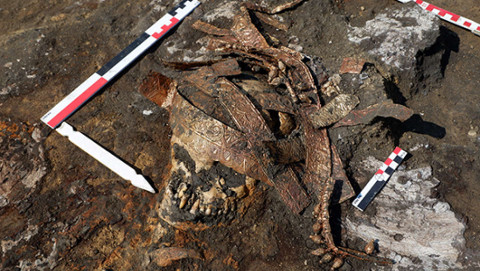Skytinnen

Credits: www.archaeolog.ru
Durch IFLScience erfuhr ich von einer russischen Expedition und Ausgrabung: „Ancient Scythian ‚Amazon‘ women discovered in Russia buried alongside their weaponry“.
EurekAlert hat noch mehr zum Thema:
At the southern and western wall there were two untouched skeletons laid on the wooden beds covered by grass beddings. One of them belonged to a young woman buried in a „position of a horseman“. As the researches of the anthropologists have shown to lay her in such way the tendons of her legs had been cut. Under the left shoulder of a „horsewoman“ there was a bronze mirror, on the left there were two spears and on the left hand there was a bracelet made of glass beads. In the legs there were two vessels: a molded cassolette and a black lacquer one hand cantharos which was made in the second quarter of the 4th c BC.
Die Reiternomadenvölker der Steppen nördlich des Schwarzen Meeres, auch als Skythen bekannt, waren „Kulturbringer“. Das erinnert mich daran, dass ich immer noch David W. Anthonys Horse, the Wheel, and Language: How Bronze-Age Riders from the Eurasian Steppes Shaped the Modern World lesen will. Liegt hier auf meinem Schreibtisch (vgl. Pontos Euxenios, 24.03.2019).